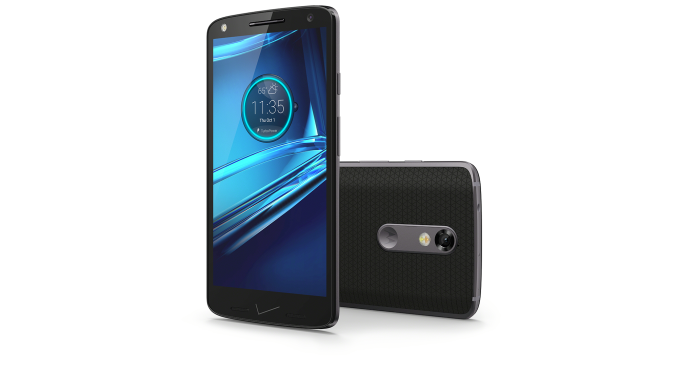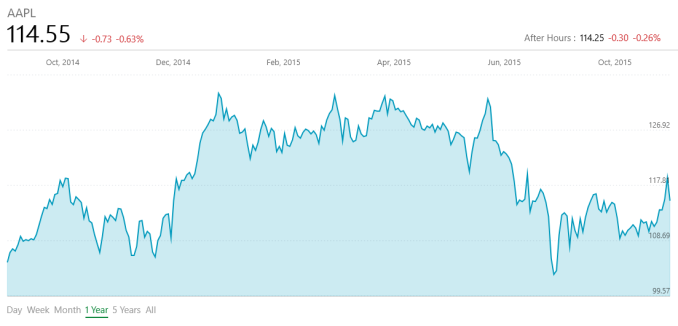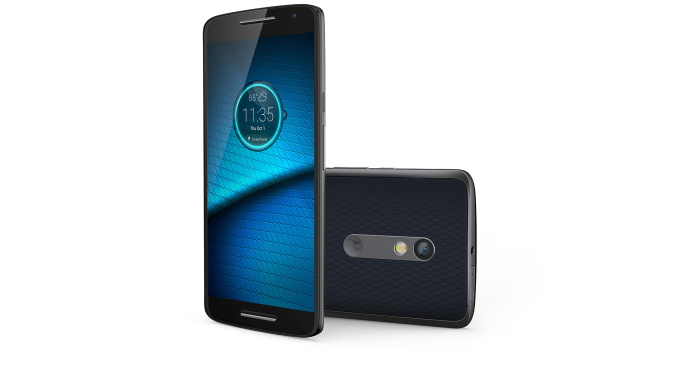
Apple FY 2015 Q4 Results: Record Fourth Quarter With 48 Million iPhones Sold
Today Apple released their Q4 results from fiscal year 2015, and in what seems like an almost unending cycle, the company has once again set a new record for the quarter with $51.5 billion in revenue. That is a 22% increase over the same period last year, where the company only had $42 billion in revenue. Apple’s strong margins continue, with 39.9% margin for the quarter. Operating income came in at $14.6 billion, up from $11.2 billion last year, and net income rose $2.6 billion year-over-year, coming in at $11.1 billion for the quarter. Earnings per share was $1.96, up from $1.42 last year.
| Apple Q4 2015 Financial Results (GAAP) | |||||
| Q4'2015 | Q3'2015 | Q4'2014 | |||
| Revenue (in Billions USD) | $51.501 | $49.605 | $42.123 | ||
| Gross Margin (in Billions USD) | $20.548 | $19.681 | $16.009 | ||
| Operating Income (in Billions USD) | $14.623 | $14.083 | $11.165 | ||
| Net Income (in Billions USD) | $11.124 | $10.677 | $8.467 | ||
| Margins | 39.9% | 39.7% | 38.0% | ||
| Earnings per Share (in USD) | $1.96 | $1.85 | $1.42 | ||
The large gains can be mostly attributed to the iPhone 6 and 6 Plus, released last year to record sales. The recently launched models were only available for a short time this quarter, but of course contributed their initial sales to Q4. The full impact of the latest models should be even more felt in Q1 FY 2016. Despite the iPhone being far and away the largest product for Apple, Mac sales have also contributed, along with services and Apple Watch.
The iPhone is king at Apple. It contributes the largest portion to their overall revenues, and with the excellent margins Apple enjoys, it is very profitable. Apple sold just over 48 million iPhones last quarter – a quarter where the new model was known to be incoming. Yes, the 6s and 6s Plus were released in Q4, but only at the tail end of the quarter. This is a 22% increase in phones sold year-over-year. Revenue for the iPhone alone was $32.2 billion for Q4, which is up 36% year-over-year and up 3% from last quarter. Q1 2016 (Oct-Dec 2015) will be the holiday quarter, and this is traditionally the strongest quarter for iPhone sales.
Mac sales increased 3% year-over-year, which means that the Mac is still showing slow growth at a time when the rest of the PC market is in decline. Apple sold 5.7 million Macs last quarter, which resulted in $6.9 billion in revenue.
The iPad continues to decline, with sales falling 20% year-over-year. For the quarter, Apple sold 9.9 million iPads, for revenues of $4.3 billion. This one segment is really the only chink in Apple’s armor, and iPhone sales are likely part of the problem, with people turning to larger phones rather than tablets.
| Apple Q4 2015 Device Sales (thousands) | |||||
| Q4'2015 | Q3'2015 | Q4'2014 | Seq Change | Year/Year Change | |
| iPhone | 48,046 | 47,534 | 39,272 | +1% | +22% |
| iPad | 9,883 | 10,931 | 12,316 | -10% | -20% |
| Mac | 5,709 | 4,796 | 5,520 | +19% | +3% |
Apple has also steadily increased its services, with the segment achieving 10% growth to $5.086 billion. This includes iTunes, AppleCare, Apple Pay, licensing, and other services.
Finally, we have Other Products, which is Apple TV, Apple Watch, Beats, iPod, and accessories. This segment outperformed all other Apple segments in terms of growth, with a 67% increase in revenue year-over-year. With the acquisition of Beats, as well as the launch of the Apple Watch earlier this year, revenue grew from $2.641 billion in Q4 2014 to $3.048 billion this quarter. Unfortunately, Apple does not break out unit numbers for anything in “Other Products” but you can bet this gain was not due to iPod sales.
| Apple Q4 2015 Revenue by Product (billions) | |||||
| Q4'2015 | Q3'2015 | Q4'2014 | Revenue for current quarter | ||
| iPhone | $32.209 | $31.368 | $23.678 | 62.5% | |
| iPad | $4.726 | $4.538 | $5.316 | 8.3% | |
| Mac | $6.882 | $6.030 | $6.625 | 13.4% | |
| iTunes/Software/Services | $5.086 | $5.028 | $4.608 | 9.9% | |
| Other Products | $3.048 | $2.641 | $1.896 | 5.9% | |
I tend to think of Apple as iPhone and other stuff, because the iPhone sales are such a huge part of their revenue stream. iPhone sales now account for 62.5% of revenue, up from 56.2% a year ago. It’s hard to fault them on this though, because clearly the larger displays on the latest iPhones have done very well for the company. But they did show good growth in Macs at a time when other PC vendors have seen a reduction in overall sales. Apple Watch is also off to a good start, but without unit sales its difficult to see any sort of pattern there yet, since it was just launched this year.
Looking ahead for Q1 2016, Apple is expecting revenues of $75.5 billion to $77.5 billion, and gross margins staying between 39% and 40%.
Source: Apple
Read More ...
Motorola Announces the DROID Turbo 2 and DROID Maxx 2 For Verizon
Motorola has been one of Verizon's Android device partners for many years now. Before Verizon had the iPhone, Motorola's DROID smartphones provided several alternatives for users who didn't want to leave Verizon, or who wanted the features or differentiation provided by Android smartphones. While the DROID line isn't what it once was, there are still DROID branded smartphones made by Motorola launched on Verizon every year. Today Verizon and Motorola announced two devices that follow up on the original DROID Turbo and DROID Maxx. Appropriately, the new phones are called the DROID Turbo 2 and the DROID Maxx 2, and you can view their specs in the chart below.
| DROID Turbo 2 | DROID Maxx 2 | |
| SoC | Qualcomm Snapdragon 810 | Qualcomm Snapdragon 615 |
| GPU | Adreno 430 | Adreno 405 |
| RAM | 3GB LPDDR4 | 2GB LPDDR3 |
| NAND | 32/64GB + MIcroSDXC | 16GB + MicroSDXC |
| Display | 5.4" 2560x1440 AMOLED | 5.5" 1920x1080 IPS LCD |
| Dimensions | 149.8 x 78 x 7.6-9.2mm, 169g | 148 x 75 x 8.9-10.9 mm, 169g |
| Camera | 21MP Rear-Facing, F/2.0 5MP Front-Facing |
|
| Battery | 3760 mAh | 3630 mAh |
| OS | Android 5.1.1 Lollipop | |
| Cellular Connectivity | 2G / 3G / 4G LTE (Qualcomm UE Category 7/9) | 2G / 3G / 4G LTE (MDM9x25 Category 4) |
| Other Connectivity | 2x2 802.11a/b/g/n/ac + BT 4.0, microUSB 2.0, GNSS | 2x2 802.11a/b/g/n + BT 4.0, microUSB 2.0, GNSS |
| SIM | Nano-SIM | |
| Price | 32GB: 24 months @ $24 ($576 Total) 64GB: 24 months @ $30 ($720 Total) |
16GB: 24 months @ 16 ($384 Total) |
It's clear that the DROID Maxx 2 is positioned as more of a mid-range device, with the DROID Turbo 2 at the high end. Both devices are similar as far as their size, mass, and battery capacity is concerned. While the Turbo 2 is actually slightly thinner and has a smaller display than the Maxx 2, the height and width of the chassis are a bit longer. The display on the Turbo 2 is also a QHD AMOLED panel, while the Maxx 2 is a 1080p IPS LCD.
The display on the DROID Turbo 2 is actually the device's selling point, although when saying the word display it's not necessarily referring to the display panel used. Instead, the unique part about this display is the fact that Motorola claims that it's shatterproof. Unlike a typical smartphone display stack, the Turbo 2's Moto ShatterShield display consists of several layers which are designed to absorb the shock of an impact. Instead of a single cover glass, the Turbo 2 has an exterior lens that sits overtop of an interior lens, with both being significantly more flexible than traditional cover glass. Motorola also has an additional touch layer to create redundancy if one is damaged during an impact, and the flexible AMOLED display also works to protect from damage.

Motorola DROID Turbo 2
Motorola claims that the exterior and interior lenses are designed to have the highest degree of optical transmissivity, but it's likely that there will be some degree of reduction in transmissivity when compared to standard smartphone displays. Reflections will also be amplified, and since there are gaps between the layers you'll be dealing with internal reflection which could make the display more difficult to use in heavy ambient lighting. As of right now it's really hard to say what impact Motorola's ShatterShield display has on visual quality, but it seems safe to assume that both Motorola and Verizon are confident about its ability to protect against damage as they are providing a four year warranty specifically for if the display does crack or shatter.
Since the DROID Turbo 2 is a Verizon exclusive smartphone, it's hard to say if or when we'll see Motorola bring their ShatterShield displays to products that ship on a wider scale. It's possible that the launch in the DROID Turbo 2 is a method of testing how consumers respond to the feature and how much demand there will be. I personally have done well by just not dropping my phones, but obviously accidents do happen and it only takes a single drop to ruin a perfect record and leave you with a shattered display.
Anyone interested in the DROID Turbo 2 or DROID Maxx 2 can get them in two days if they're on Verizon in the US. On a 24 month installment plan the Turbo 2 is $24 per month for the 32GB model, or $30 per month for the 64GB model, while the DROID Maxx 2 is $16 per month.
Read More ...
True Beef or Sloppy Sausage? Digging Into the Red Meat + Cancer Correlation
A recent study used meta-analysis to determine that meat is a carcinogen -- but how much danger are we really in?
Read More ...
Available Tags:Apple , Motorola ,



No comments:
Post a Comment